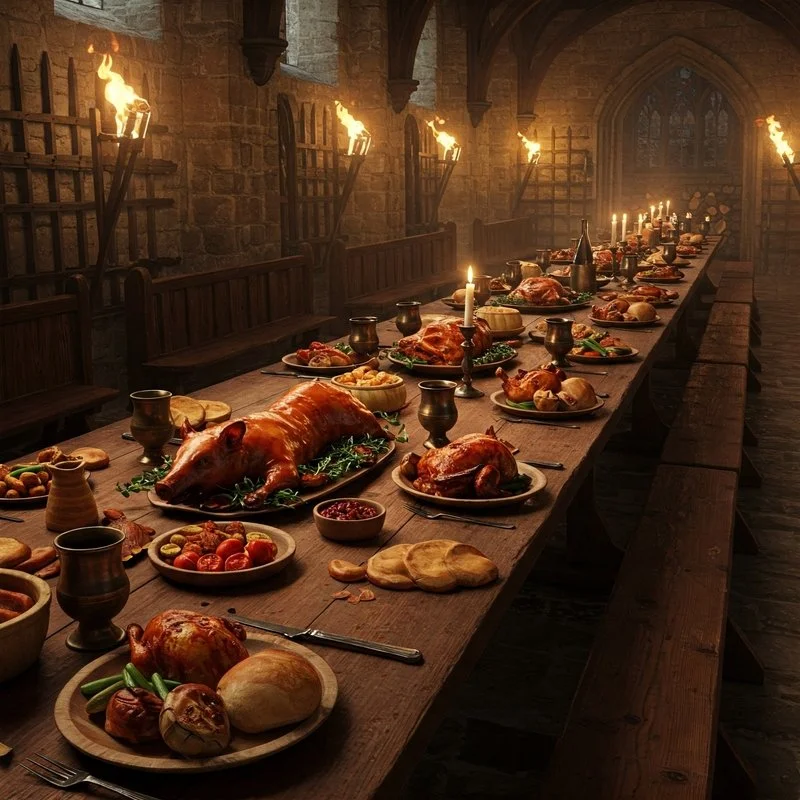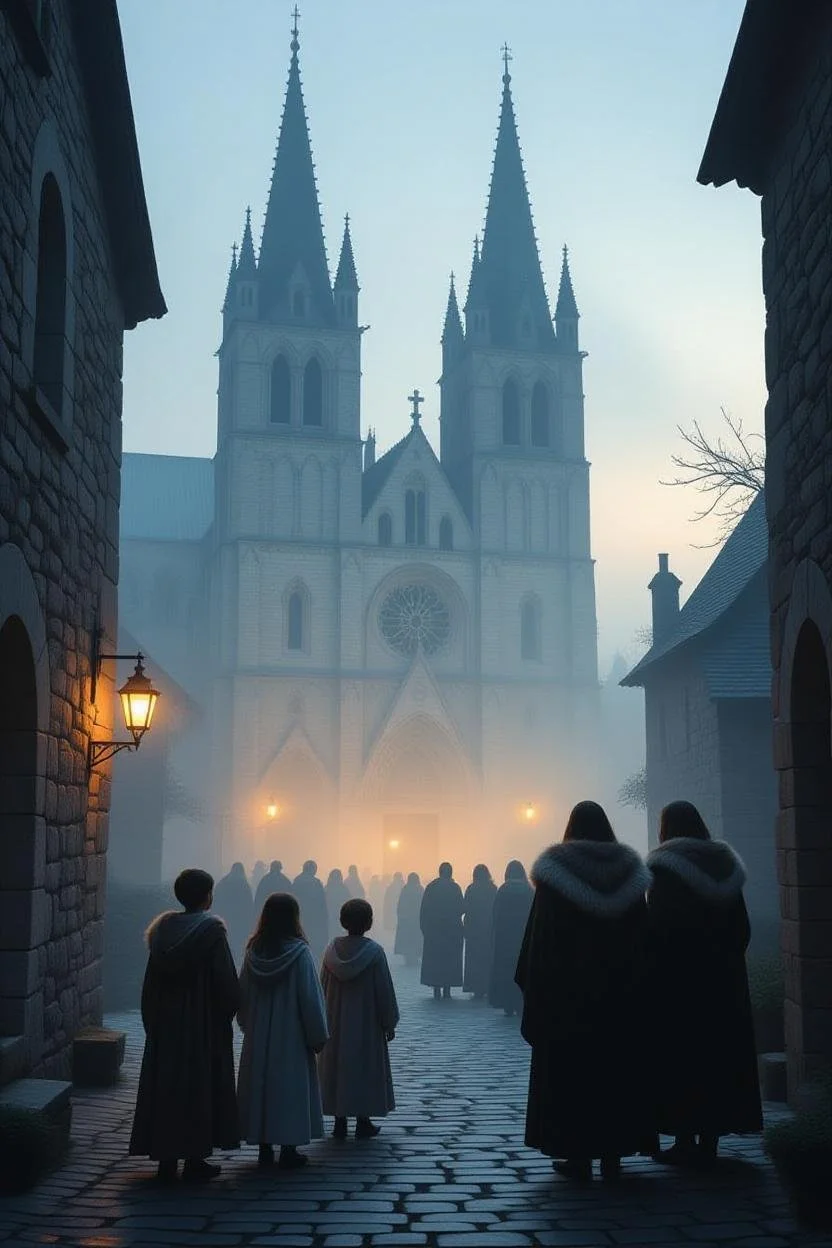All Hallows’ Day: The Feast of All Saints
From Dark to Light
After the shadowed vigil of All Hallows’ Eve came the brightness of All Hallows’ Day, later called ‘Hallowmas’.
The name joins hallow (Old English hālga, “holy person”) and mass (from Latin missa, “Eucharistic service”). It was the day when the Church lifted its gaze from the souls still journeying toward heaven to those who had already arrived.
Altars were dressed in white, bells rang across town and countryside, and processions wound through streets lit by candles.
The message was clear: the darkness of death had been overcome by the light of saints.
Harvest Feasts and Holy Days
The choice of 1 November was no accident. The date lay close to the Celtic Samhain and the Roman Feralia, both concerned with death, harvest, and renewal.
By fixing All Saints’ Day at this time, Pope Gregory IV (c. 835 AD) folded those seasonal instincts into Christian thanksgiving. Where pagan farmers had once feasted in gratitude for the harvest and offered gifts to household spirits, medieval Christians brought loaves and ale to church as offerings for the poor—the harvest made holy.
These small gifts, sometimes called Harcakes, were baked from oats or barley, the same grains that once honoured the earth’s fertility gods.
The Meaning of the Feast
All Hallows’ Day celebrated not one saint, but all the saints—famous martyrs and humble souls alike. In an age of plague and war, it reminded believers that sanctity was still possible. Every bell that rang and every candle that burned proclaimed hope: the communion between heaven and earth remained unbroken.
Medieval sermons often urged listeners to imitate the saints rather than merely praise them. As one 13th-century preacher said: “Their crown shall be thine, if thou wilt follow their path.”
From Pagan Ritual to Christian Remembrance
Pagans made harvest offerings to fertility gods, whilst Christians offered bread and ale to the poor.
Pagans had bonfires protection and purification, whilst Christians lit candles for the saints and souls
Pagans feasted to honour the departed, whilst Christians celebrated a eucharistic feast to honour the holy dead
The same desire to thank, to bless, and to remember ran through both worlds.
A Medieval Scene
Churchgoers on All Hallows’ Day (All Saints’ Day)
Picture Lincoln in the early morning of 1 November. Mist drifts above the Minster towers; townsfolk in wool cloaks hurry to Mass carrying loaves to be blessed.
Inside, incense curls upward; the choir sings Gaudeamus Omnes in Domino:
“Let us all rejoice in the Lord.”
And beyond the church doors, neighbours share bread and ale, exchanging the greeting:
“A blessed Hallowmas to you.”
Somehow, it feels wrong that we have forgotten these all-important rituals from our past - but at least we have historical fiction to immerse us in these times gone by!
Next in the series: “All Souls’ Day – Bread, Prayer and Memory” (Sunday 2 November).


